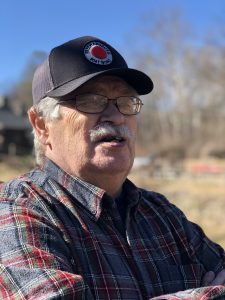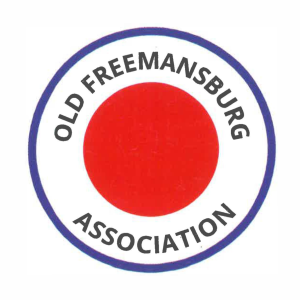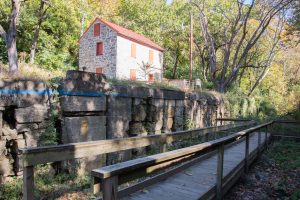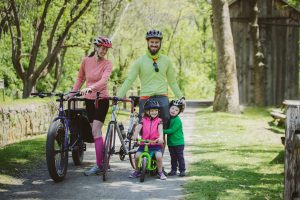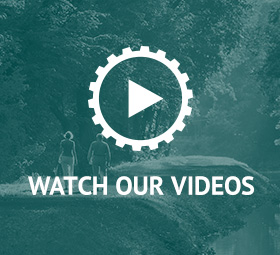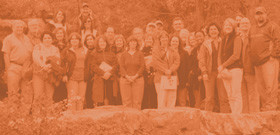The D&L Blog

Have you ever traveled along the D&L Trail between Bethlehem and Easton? Or have you stopped by the National Canal Museum and taken a ride on the Josiah White I/II as you listen to crew members in period clothing?
If so, you can send a Thank You to Charles “Charlie” Derr.
Affectionately referring to DLNHC as “Dellie,” Charlie is someone that has a long history with the organization.
As park manager for Hugh Moore Park, Charlie was responsible for maintaining the 2.5-mile restored section of the Lehigh Canal, keeping the National Canal Museum’s canal boats, the Josiah White and the Josiah White II afloat, caring for the mule teams that pull the boat. He made sure members of the boat crew wore 19th century-style work clothes and strong boots.
“When I got here shortly after the first boat began running, the kids in the crew wore shorts, tee shirts, and sneakers. I got them into more historically accurate clothes and told them enough stories about the canal so they could explain the history to the visitors.”
As founder and president of the Old Freemansburg Association, Charlie has worked for nearly half a century to preserve and revitalize significant remnant of our Corridor’s industrial heritage; a remnant that stands as visual landmarks for both the D&L Trail and the National Canal Museum.
An Early Life on the Canal
Born and raised in Freemansburg, Charlie has known canals his entire life. He even grew up listening to stories from his neighbor, Joseph Reed, a captain on the Lehigh Canal. One of the last, in fact. Needless to say, Freemansburg held a special place in Charlies’s heart from the beginning.
But Charlie’s father worked at Bethlehem Steel, and Bethlehem Steel developed a particular rule that required employees to live in certain areas. So, when Charlie was 10, his family moved out of his childhood home to live in Bethlehem. With that came a transfer to Bethlehem School District. It was an experience during history class, he says, that sticks with him.
Charlie noticed that in his Pennsylvania history textbook, there was a small section about canals. Everything related to canals, however, was about the Erie Canal. Since Freemansburg was mere miles away, he wanted to see more of the story told to a wider audience.
Moving Back and Starting Over
Of course, as with many things that occur during childhood, the memory faded over the years. Charlie became an adult, married, and started a family of his own. It was not until his own kids began schooling that the observation resurfaced. Since he did not work for Bethlehem Steel, there was nothing keeping him from returning to his family home which was left to him by his grandparents. And thus started his journey. But restoring Freemansburg to its full potential would not be easy.
“Inner Club Canal Commission was a group of sportsmen from the Lehigh Valley that formed a unit group with other organizations to tackle restoration of the Lehigh Canal primarily as a recreation venue. They had a lot to do with Lehigh Coal and Navigation selling its property to public entities. LCN offered rights initially to county governments and cities. With Easton being the first to get Hugh Moore Park. Allentown and Bethlehem were quick to follow behind, along with the boroughs. Freemansburg, I believe in ‘65, paid $7,500 [~$70,665.95 in 2023] for the mile and a half of canal that runs through Freemansburg proper.”
That’s what really started it all.
A Green Wall
“50 years ago, Bethlehem & Allentown’s towpath were passable and there was a park. They would lead to Freemansburg and hit a green wall – a dead end.”
According to Charlie, the Old Freemansburg Association’s (OFA) first twenty years were dedicated to clearing out the site. Trees were removed from the old canal and rail beds, brush was cleared, and the historic site finally emerged again.
Construction of the mule barn was the next step, and took about another twenty years.
For the people in OFA, the bottom line was to make it look the best it could, with the resources they had. “So that the professionals, primarily the Dellie staff, would look at the site and see the possibilities. So that by opening it to the public, people would see an area that wasn’t restored, but stabilized. We stopped the deterioration.”
Over time, OFA was able to get more funding through grants and assistance from the DLNHC to repair the towpath and improve accessibility. No longer was Freemansburg cut off from Bethlehem and Allentown.
And even more possibilities were about to open.
The D&L Trail and Public Green Space
Charlie notes that during the mornings he can sit with a cup of coffee and see dozens of people biking, walking, and running along the D&L Trail from his kitchen table.
“Even in bad weather,” he says, “I’m amazed at how many people are on the towpath.”
Charlies’s work with the OFA has allowed thousands of people access to open, public green space; to a stretch of land that allows trail users to travel through history. It is also a key connection along the D&L Trail between two of the Corridor’s biggest cities – Easton and Bethlehem.
Freemansburg Canal Educational Center
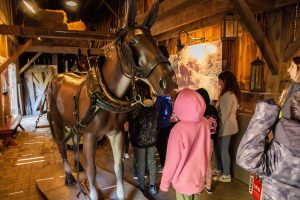
If you are familiar with DLNHC’s work, or perhaps grew up during the past decade in Bethlehem School District, you might have heard of Tales of the Towpath. Tales of the Towpath is a fourth- to fifth-grade curriculum developed in 2012 by former DLNHC staff, Dennis Scholl. And the story begins in Freemansburg.
With all the site improvements, the stage was set. Freemansburg was now a classroom.
Through DLNHC programming and cooperation from OFA, students can visit Freemansburg as a satellite site and learn from “period-accurate” educators. They learn about friction and buoyancy. They learn about mules and their tenders. They learn about the canals and their importance for both industry and transportation.
Most importantly, they learn about Freemansburg.
A Legacy to be Proud of
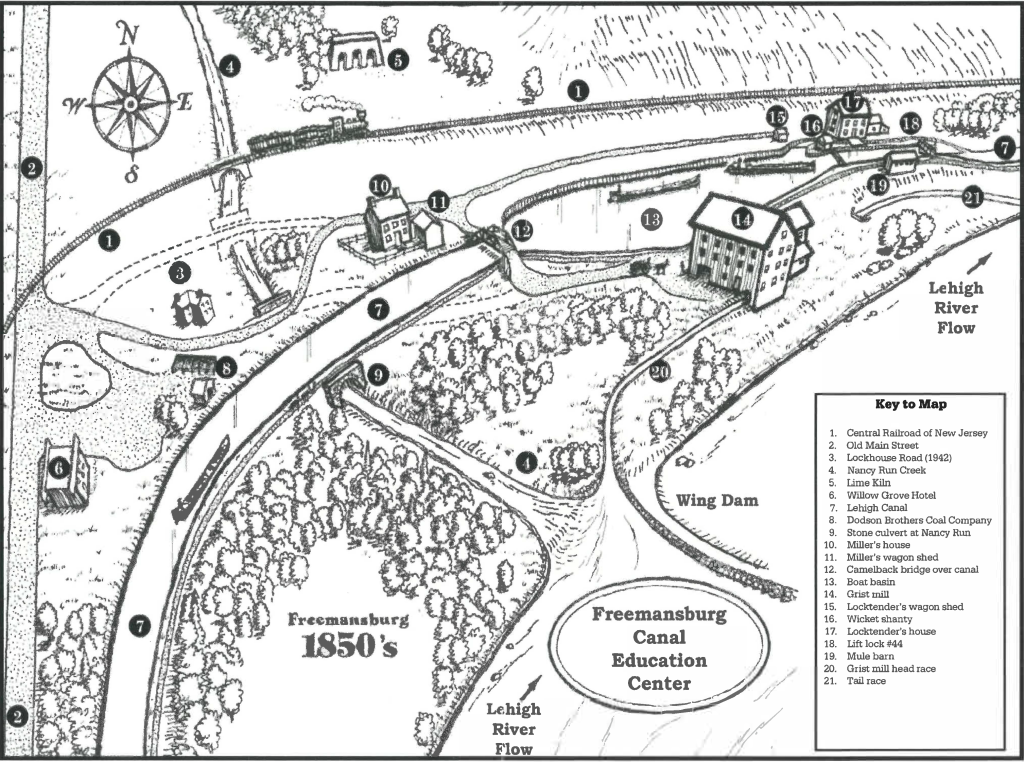
According to DLNHC Historian Martha Capwell Fox, “Charlie Derr has been passionate about preserving and promoting the canals, especially the Lehigh Navigation, for most of his life.”
Today, the D&L Trail, a public green space, attracts thousands of bikers, walkers, and runners annually along the towpath from Bethlehem to Easton. Children and adults alike can immerse themselves in our region’s industrial heritage through the National Canal Museum and Freemansburg Education Center. Charlie’s work with the Lehigh Canal and canals in general will be remembered for many years.
If you’re interested in learning more about Old Freemansburg Association, you can follow the Facebook page here.
Thanks Charlie, for your passion and advocacy that has helped preserve and protect “canal life” for so many today.
This article was written as part of the DLNHC Faces of the Corridor campaign. If you know someone or group that you think should be featured, visit this page to learn how you can nominate them.

